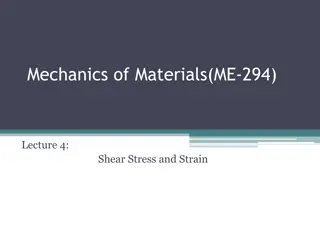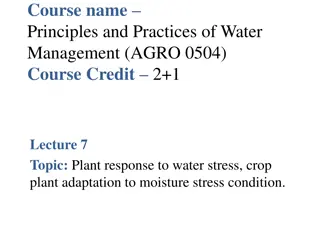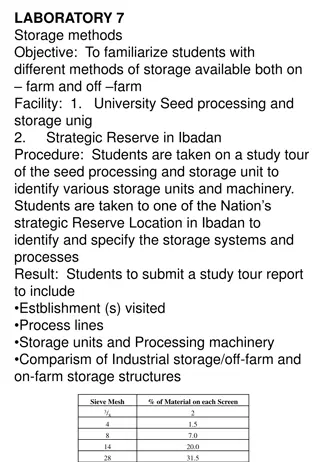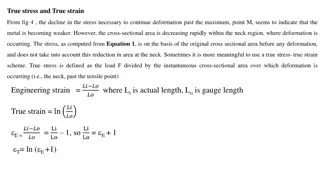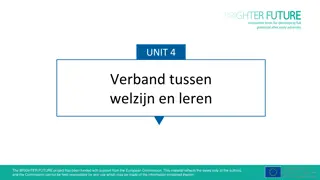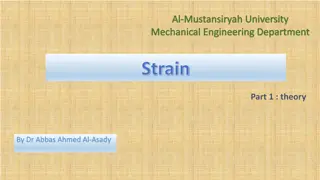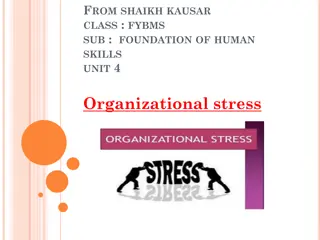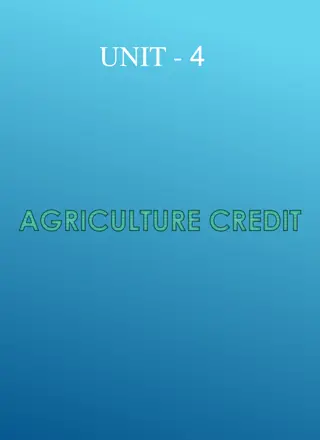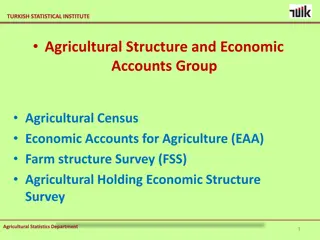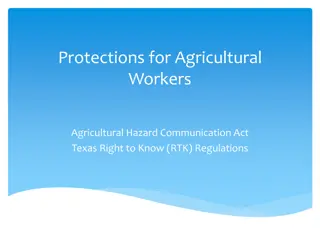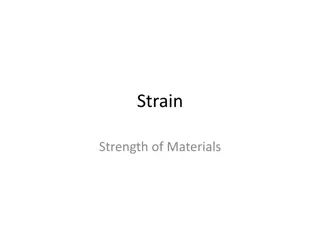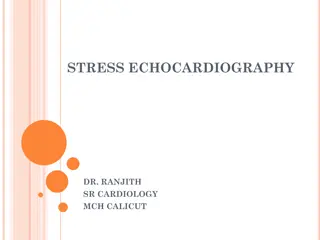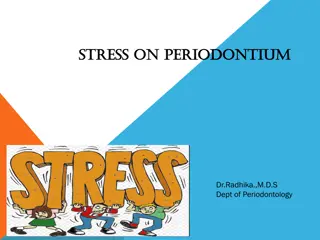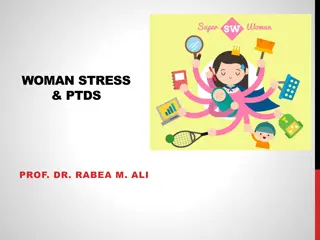Understanding Agricultural Materials Behavior under Stress
Agricultural materials exhibit different behaviors under stress, which can be represented by models such as Maxwell, Kelvin, and Burger's models. The laboratory method for determining creep in a 4-element Burger's model is explained. Additionally, the drying process of agricultural materials, including grain drying, psychrometry, and different categories of drying processes, is discussed with factors affecting the choice of drying method.
Uploaded on Jul 05, 2024 | 0 Views
Download Presentation

Please find below an Image/Link to download the presentation.
The content on the website is provided AS IS for your information and personal use only. It may not be sold, licensed, or shared on other websites without obtaining consent from the author. Download presentation by click this link. If you encounter any issues during the download, it is possible that the publisher has removed the file from their server.
E N D
Presentation Transcript
Behaviour of agricultural/food materials under stress The behaviour of agricultural materials under stress can be represented by any of these three models Maxwell model - States that the behaviour of agricultural materials under stress can be represented by a spring (representing elastic behaviour) and a dashpot (representing viscous behaviour) in series. Kelvin model - States that the behaviour of agricultural materials under stress can be represented by a spring (representing elastic behaviour) and a dashpot (representing viscous behaviour) in parallel. Burger s model - of agricultural materials under stress can be represented by a spring (representing elastic behaviour) in series with a dashpot and a combined spring and a dashpot (representing viscous behaviour) in parallel. States that the behaviour
Laboratory method for determining creep in 4 element Burgers model. The apparatus for use is as shown in figure a below. The product is mounted and the load hang as shown. The deformation from time 0 is monitored on the dial guage for time t. The deformation is then plotted against time and the parameters read as shown in figure b and e(t) computed as in equation beneath figure b. etc a.
b. Drying of agricultural materials Grain drying is a process of simultaneous heat and moisture transfer. The study of relationships between air and its associated water is called psychrometry. The relative humidity(RH) of air is the ratio of the vapor pressure of the water molecules in the air to the saturated vapor pressure at the same temperature. The relative humidity usually is expressed as a percentage. The specific volume(v) of moist air is the volume per unit mass of dry air and is expressed in cubic meters per kilogram of dry air. The power required by the fan on a drying system is affected by the specific volume of the drying air. The enthalpy(h) of moist air is the energy content per unit mass of dry air above a certain reference temperature (usually 0 C). It is denoted in kilojoules per kilogram of dry air. Material factors affecting the choice of a drying method i) Temperature tolerance: High temp may reduce germination of grains for seeding and may partially cook the product or change its
Categories of drying processes i) Air and Contact Drying under Atmospheric pressure: Heat is transferred through the foodstuff either from heated air or from heated surfaces. The water vapour is removed withthe air. ii) Vacuum Drying: Advantage is taken of the fact that evaporation of water occurs more readily at lower pressures than at higher ones. Heat transfer in vacuum drying is generally by conduction sometimes by radiation. iii) Freeze Drying: The water vapour is sublimed off frozen food. The food structure is better maintained under these conditions. Suitable temperatures and pressures must be established in the dryer to ensure that sublimation occurs. ii) Humidity response: There are materials like tobacco and prunes which undergo physiological change during drying. These products will have to be dried with air of specific RH. iii) Compressive strength: Fruits, vegetables and other soft products which cannot sustain pressure in deep bed drying




